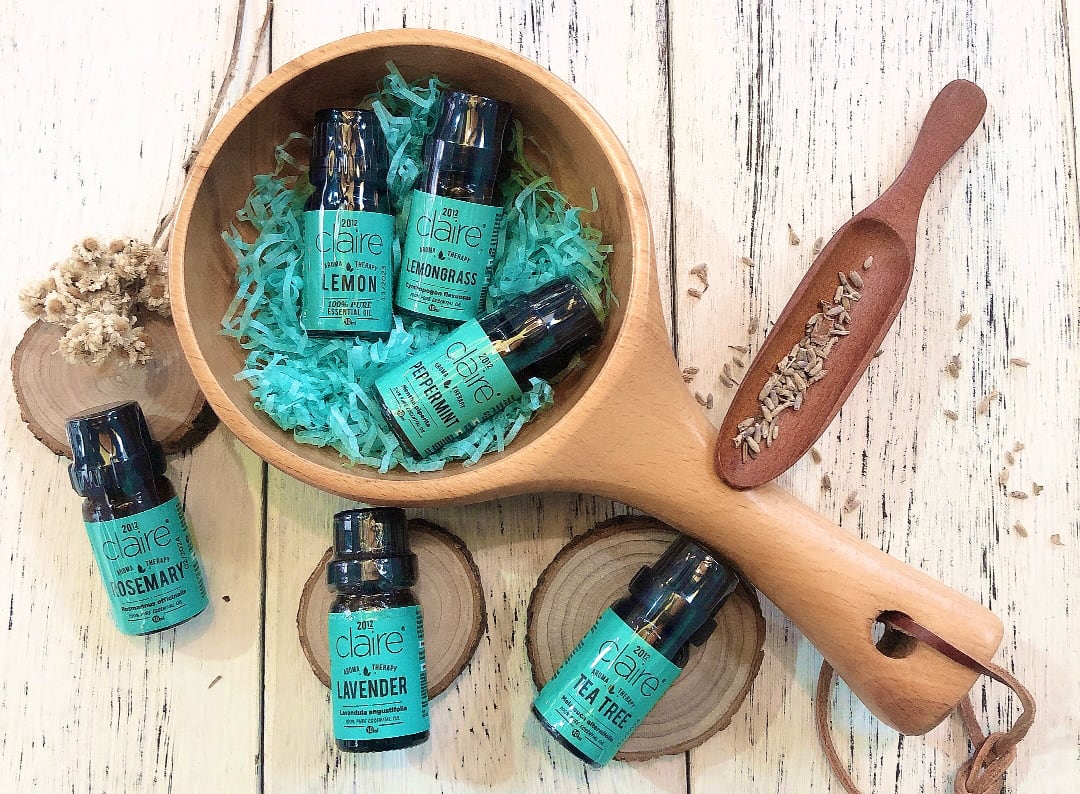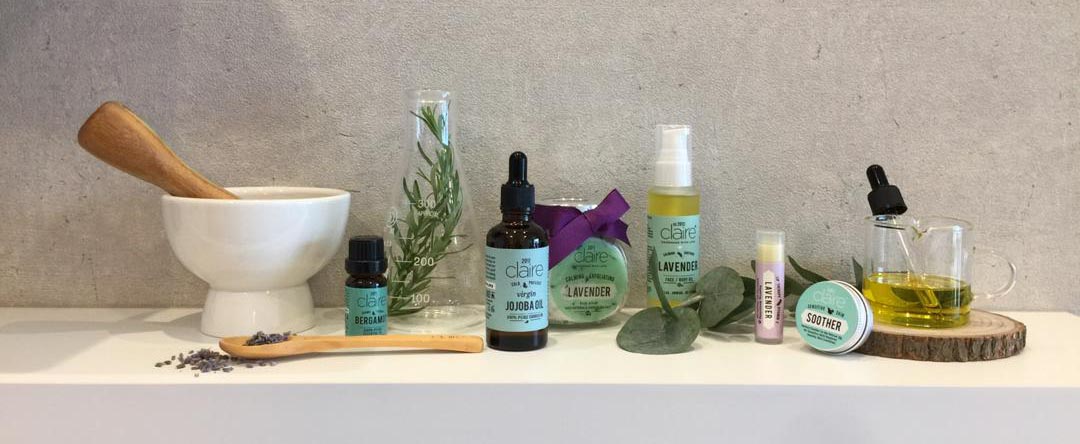FREE: Lemongrass Essential Oil x1
AIR PURIFYING BLEND
Haze and bacteria in the air!
Diffuse with cool mist to humidify the air and help reduce the dryness of your skin and throat.
This set comes with Anti-bacterial essential oils used in the blend below.

IN THIS SET:
Lemongrass Essential Oil (FREE!)
Tea Tree Essential Oil
Rosemary Essential Oil
Lavender Essential Oil
Peppermint Essential Oil
Lemon Essential Oil
HOW TO BLEND:
6 drops Lemongrass Essential Oil
5 drops Tea Tree Essential Oil
5 drops Rosemary Essential Oil
4 drops Lavender Essential Oil
3 drops Peppermint Essential Oil
3 drops Lemon Essential Oil
TO DIFFUSE: Combine all the oils according to the ratio above into your essential oil diffuser with water. Diffuse not more than 1-2 hours a day if you have children around, switch off before sleep.
HOW-TO DIY ROLL-ON: Combine all the oils according to the ratio above into 15ml Roll-On glass bottle, fill up the bottle with Jojoba Oil, apply on the head, neck, chest, and feet. Repeat 3 times a day, or before sleep.

✨ How to use essential oils for the flu:
• Inhalation is the most beneficial way to use essential oils for the flu. You can inhale essential oils by sniffing a drop from your palm.
You can also add a few drops of essential oils to:
• a diffuser, to clean the air
• dilute in a carrier oil and add to steamy bathwater
• a carrier oil, for massaging the head, neck, or feet
• a large bowl of hot water, for steam inhalation
• hot or cold compresses

ESSENTIAL OIL HOW-TO
1. DIFFUSE
Put a diffuser by your bed and diffuse oils while you sleep at night or in the family room while you're reading or winding down in the evening. Throughout the day, diffuse for work or study with oils that improves brain power or energy. This is also a good way to add the scent of an essential oil to a room.
2. INHALE
Clear your mind then inhale directly from an open bottle or rub a drop of oil between your palms and breathe in the aroma. Do as needed throughout the day. Several drops of essential oil are placed on a cotton ball or tissue and allowed to evaporate into the air.
3. SKIN APPLICATION
Besides your face and body, the most common places to apply oils are the bottoms of feet, chest, temple and pulse points. Combine 5 to 10 drops with a carrier oil like Jojoba, Avocado or Rosehips oil.
IMPORTANT: Just because it's from a plant doesn't mean it's safe to rub on your skin, or breathe, or eat, even if it's "pure." Natural substances can be irritating or cause allergic reactions. Like anything else you put on your skin, it's best to test a little bit on a small area and see how your skin responds.
4. BATHS
Add 6-10 drops of essential oil to bath water or use with Sea salts or carrier oil for a soothing bath and moisturised skin.
5. MASSAGE
When you visit the massage centre, it's always a good idea to bring your own favourite oil! Or give yourself a massage at home for a good night sleep. Make your own massage oil by adding 20-25 drops diluted to 1/2 cup of carrier oil. Start by massaging the feet as it allows oils to quickly absorb into skin.
6. SPRAY
Add 6-10 drops of essential oil to water in a glass spray bottle, shake well before use. Spray into the air to deodorize a room or set a refreshing mood. You might also want to use a solution of water and your favorite essential oil as a yoga mat cleaner. Always shake well before use.
ESSENTIAL OIL SAFETY TIPS
- This guide is not meant as a substitute for medical advice. Definitely talk to your doctor for any medical condition!
- If you have easily irritated skin, try using essential oils with a carrier oil first. If redness occurs, apply carrier oil to the area to dilute the essential oil.
- Citrus oils can increase sun sensitivity so avoid sun for 12 hours after applying on skin.
- To retain their potency keep essential oils stored away from sunlight and moisture.
- Essential oils are extremely concentrated and can rub off nail polish and even melt plastic.
- Avoid plastic containers for storing essential oils. Stick to glass bottles.
- Oils, and carrier oils, can stain clothing, towels and furniture -so be careful!
- Avoid using metal or plastic utensils or containers to mix or apply essential oils. Stick to glass or ceramic.
- Always consult your doctor before using essential oils if you're on any medication prescription. Your doctor can make sure it's safe for you and rule out any side effects, like affecting your prescriptions.
- Don't use essential oils on a baby unless your pediatrician says it's OK.
- Keep all essential oils locked away out of children's sight and reach.
- Stop using essential oils if you notice a rash, little bumps, boils, or just itchy skin -- take a break, gently wash it off with water.
- Avoid essential oils if you're pregnant, include wormwood, rue, oak moss, Lavandula stoechas, camphor, parsley seed, clary sage, rosemary, and hyssop.
CAUTION
We do not recommend these oil blends as a replacement for traditional medicine.
 0
item(s)
0
item(s)